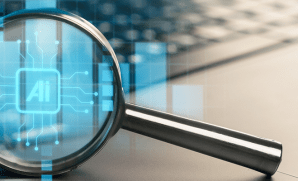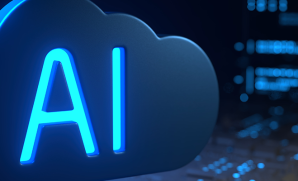SAP Application Management Services (AMS) trends we see dominating 2024
Publish Date: September 25, 2024The evolution of SAP Application Management Services (AMS) over the past few years has been nothing short of transformative. Comparing the landscape now to the pre-pandemic era reveals significant advancements and shifts in priorities driven by the rapid acceleration of digital transformation initiatives. This includes cloud adoption and integrating innovative technologies like automation, machine learning (ML), and artificial intelligence (AI).
In 2024, SAP AMS will enable businesses to navigate an increasingly complex and competitive environment, with emerging new trends crucial for survival and growth. For better or worse, the post-generative AI era has accelerated these trends while introducing new dynamics and priorities, such as enhanced security measures and a focus on sustainability.
Understanding SAP AMS’s trajectory helps illuminate how far we’ve come and the emerging trends that will shape its future. This journey is exactly what we want to explore in this blog—where we are and where we go from here. But first, let us understand the speedbumps in front of us.
Cloud dominance: Rise of S/4HANA and implications
Cloud computing has transcended from a mere trend to become the backbone of modern enterprise IT infrastructure. Demands for flexibility, scalability, and cost-efficiency drove this evolution.
Adopting RISE with SAP underscores this trend, providing a comprehensive package that simplifies cloud migration and ensures seamless integration with existing systems. The cloud-first approach reduces the total cost of ownership and accelerates innovation cycles. Companies can deploy updates and new functionalities more rapidly, keeping pace with the ever-evolving business landscape. However, this transition necessitates robust cloud management strategies to ensure data security, compliance, and optimal performance.
That said, it is essential to recognize that not all organizations are inclined to adopt cloud solutions. Industries like public sector units (PSUs), defense, and other security-sensitive sectors often resist cloud migration due to concerns about data privacy and the potential risk of unauthorized access to critical systems. For such organizations, on-premise solutions are preferred, ensuring full control over security and compliance. Furthermore, the complexity of modern IT environments, characterized by many applications and platforms, demands seamless integration and interoperability.
Furthermore, the complexity of modern IT environments, characterized by many applications and platforms, demands seamless integration and interoperability. In 2024, the focus is on creating a cohesive ecosystem where SAP and non-SAP applications can communicate and operate harmoniously. This is crucial as businesses increasingly rely on diverse software products from providers like Microsoft, Salesforce, and Adobe. Achieving seamless integration requires sophisticated data integration strategies, specialized interfaces, and effective management of user identities and access rights.
Finally, the journey towards digital transformation is incomplete without addressing the challenges posed by legacy applications. Rehosting, re-platforming, and refactoring are often employed to transition these applications to modern architectures. In this regard, SAP BTP has arisen as a bastion of integrating innovations. It serves as a unified platform that enables the development, extension, and integration of SAP and third-party solutions. By leveraging BTP, organizations can accelerate the implementation of new technologies and create tailored solutions that meet specific business needs. It also enhances the ability to perform advanced analytics, providing deeper insights into business operations.
Key emerging trends becoming vital for businesses.
It cannot be denied that innovations accelerating the delivery of applications, particularly with automation and low-code tech, have shot AMS’ potential (as well as related complexities) to unprecedented levels. And with this accelerated pace of change, time is precious – on one side, traditional cost-efficient ways are running out of rope. Conversely, CIOs face the pressure to manage the complexities of hybrid environments and deliver on the ROI for technology investments, all while upskilling their workforce for relevance.
It is a tall order indeed. Mercifully, SAP works actively with its tech partners like YASH to support businesses in some AMS trends that will not just move away from a ‘fire-fighting approach’, but also embrace a resilient one.
- AI and Automation: AI and automation are revolutionizing AMS by enhancing efficiency and reducing operational costs. Predictive analytics, automated testing, and robotic process automation (RPA) are key areas AI significantly impacts. These technologies enable proactive management of SAP applications, anticipating issues before they occur and automating routine tasks to free up resources for strategic initiatives.
- Cloud-native ALM solutions: The transition to cloud-native Application Lifecycle Management (ALM) solutions is a crucial trend. SAP Cloud ALM is becoming central to managing SAP applications, offering real-time monitoring, diagnostics, and scalability. This transition facilitates unified application lifecycle management across cloud and hybrid environments, providing a more streamlined and efficient management process.
- Integration with DevOps: Integrating DevOps practices with AMS enhances application development, deployment speed, and quality. Continuous Integration and Continuous Delivery (CI/CD) pipelines are essential for faster software releases, while agile methodologies promote iterative development, ensuring that applications can quickly adapt to changing business needs.
- Enhanced user experience: Future AMS solutions will prioritize user-centric design to improve the ease of managing and optimizing SAP environments. This includes intuitive interfaces, customizable dashboards, and deep analytics that offer holistic insights into any application’s health and performance. A focus on user experience helps ensure that IT teams can efficiently manage their SAP landscapes.
- Sustainability and ‘Green IT’: Sustainability is becoming a key consideration in AMS, reflecting broader environmental goals. Emphasizing energy-efficient data centers, optimized resource usage, and eco-friendly practices in software development and deployment is crucial for reducing the carbon footprint and promoting sustainable IT operations.
- Data-driven decision-making: Leveraging advanced analytics for data-driven decision-making is becoming increasingly important. Predictive maintenance, performance monitoring, and usage analytics provide actionable insights that drive continuous optimization and innovation in AMS. These insights help organizations make informed decisions to enhance their SAP applications’ efficiency and effectiveness.
Catalysts for change or laggards?
A convergence of advanced technologies, strategic integration, and a focus on sustainability characterizes the future of SAP AMS in 2024. Embracing these trends will enable organizations to optimize their SAP ecosystems, drive innovation, and achieve sustainable success in an increasingly complex digital landscape—even amidst the challenges faced by sectors hesitant to migrate to the cloud.















